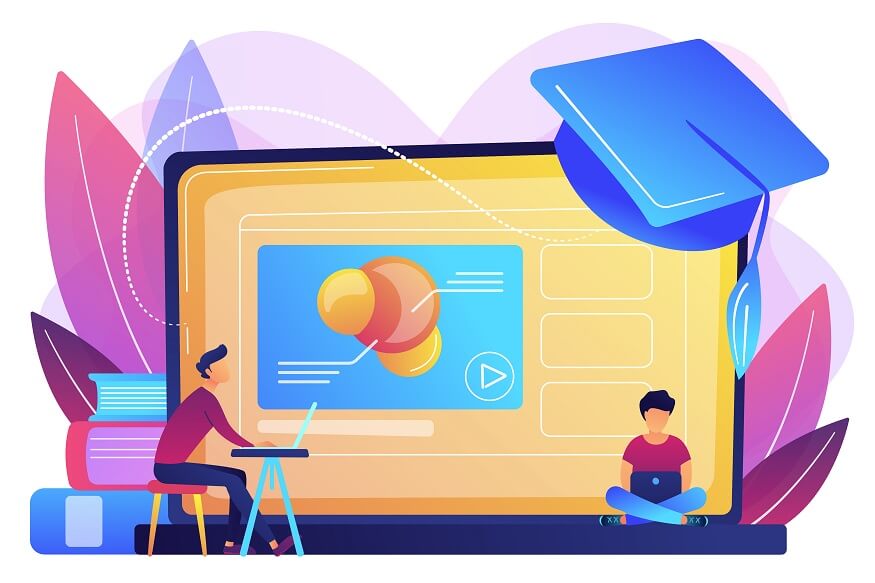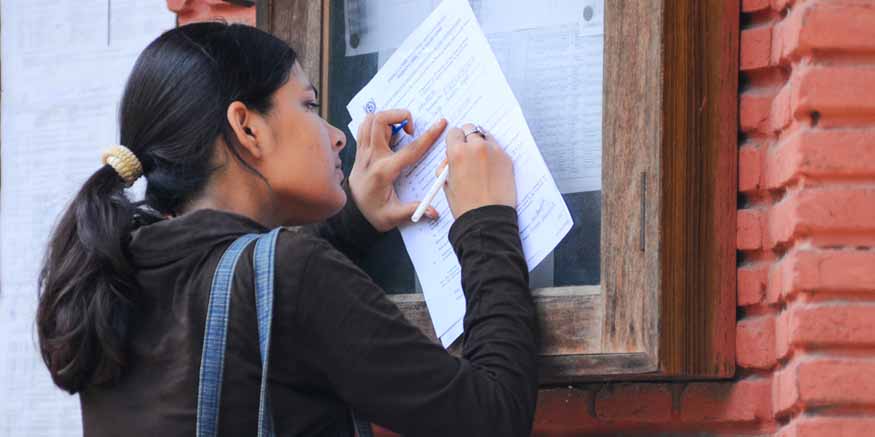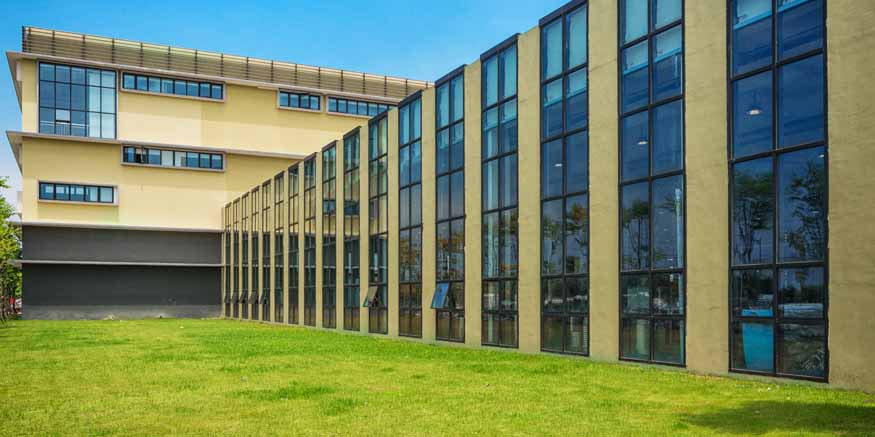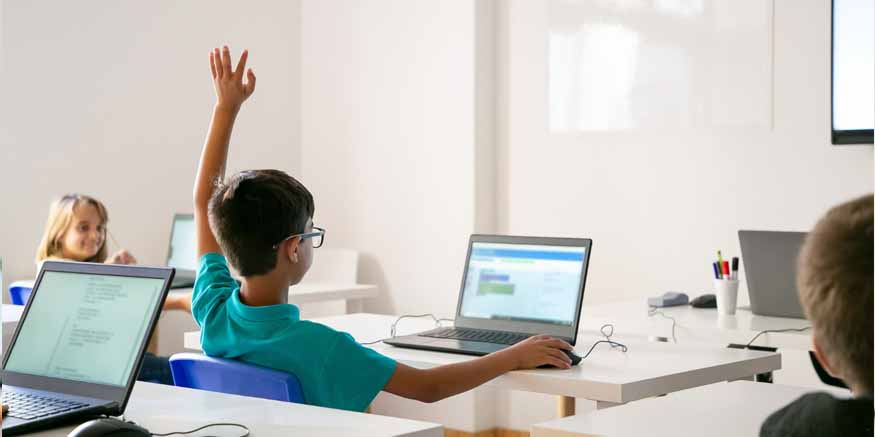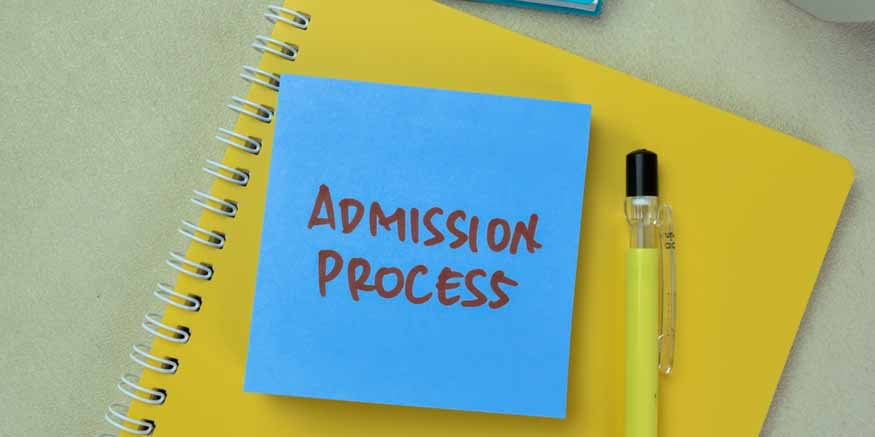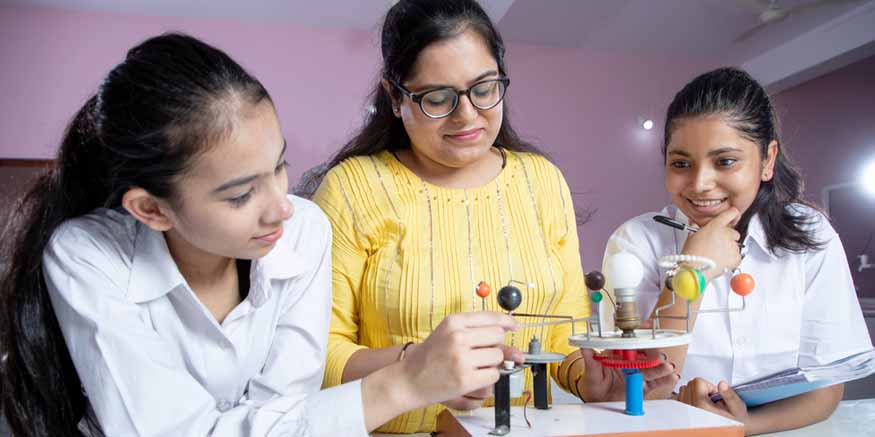Blended learning is an educational approach that combines traditional face-to-face teaching methods with online learning activities. It seeks to integrate the best aspects of both in-person instruction and digital technology to enhance the learning experience.
The blended learning approach is similar to merging two components to make a more effective learning formula. It blends the advantages of live interactions with professors and other students with the advantages of online resources and technology that provide flexibility, access to an extensive quantity of information, and modify learning experiences.
In a blended or hybrid learning environment, students typically attend some classes or activities in person, where they can participate in discussions, ask questions, and receive immediate feedback. They also participate in online activities such as viewing educational films, completing interactive sections, participating in virtual chats, and taking online quizzes.
The blended learning approach allows students to study at their own speed, have access to materials outside of the classroom, and improve their digital literacy abilities. It also allows teachers to better personalise lessons to particular student requirements, track progress, and give timely support.
Overall, blended learning combines the best of both worlds together by blending traditional methods of teaching with online resources to create a more dynamic and engaging learning environment.
Types of Blended Learning:
There are various types of blended learning models that can be implemented for children. Here are some common types:
Rotation Model:
In this model, students rotate between different learning stations or modalities. Students may, for example, spend some time in regular classroom teaching, then rotate to a computer lab for online exercises, and lastly engage in group work or project-based learning.
Flex Model:
In the flex model, students have more control over their learning pace and path. They primarily learn through online resources and activities, with the teacher providing individual or small-group support as needed. Students have flexibility in choosing when and where they learn, but regular check-ins and assessments are conducted to monitor progress.
Self Blend Model:
This model allows students to supplement their traditional classroom learning with online courses or resources. For instance, a student may take an online language course outside of normal school hours or use online resources for further practise and enrichment in specialty fields.
Online Lab Model:
In this model, students primarily learn online but come together for specific activities, experiments, or collaborative projects in a physical lab or classroom setting. The online component provides content delivery and individualised instruction, while the face-to-face sessions focus on hands-on activities and group interactions.
Flipped Classroom Model:
Students study new concepts or topics outside of the classroom using pre recorded films, books, or online modules under the flipped classroom paradigm. The remainder of the classroom time is devoted to discussions, problem solving, and application of newly acquired knowledge. During the in-person sessions, the teacher acts as a facilitator and guide.
Blended Learning Examples:
Language Learning:
Students in a blended language learning classroom may practise vocabulary and grammar individually using online language learning platforms or applications.
They can access interactive exercises, listen to audio recordings, and engage in language activities. In the physical classroom, the teacher facilitates conversations, conducts speaking and listening exercises, and provides guidance and feedback to reinforce online learning.
Math Instruction:
In a blended maths classroom, students can use online maths programs or apps to work on adaptive maths exercises tailored to their individual learning needs. They can practise maths skills, solve problems, and receive immediate feedback. In the face-to-face class, the teacher focuses on addressing specific challenges, providing targeted instruction, and facilitating maths discussions and group activities.
Literature Discussions:
In a blended literature classroom, students can read assigned texts online and engage in virtual discussions using online platforms or discussion boards. They can share their interpretations, respond to prompts, and interact with their peers asynchronously. In the in-person classroom, the teacher leads deeper discussions, analyses literary elements, and guides collaborative activities such as character analysis or debate.
Science Experiments:
Blended learning can be used in science classrooms to enhance hands-on experiments. Students can use online resources to conduct preliminary research, watch videos demonstrating experiments, and access simulations or virtual labs. Students conduct practical science experiments, gather data, analyse outcomes, and debate their findings in the physical classroom. Online platforms can be used for post-lab reflections or further exploration of related concepts.
Project-Based Learning:
Blended learning approaches can support project-based learning (PBL) approaches. Students can conduct online research, collaborate on shared documents or platforms, and access multimedia resources to gather information and materials for their projects. In the classroom, students work on their projects, receive guidance from the teacher, engage in peer reviews, and present their final work. Online components can be used for documentation, reflection, or peer feedback.
Benefits of blended or Hybrid course for students:
Students can derive several benefits from blended or hybrid courses for students.
Flexibility:
Blended courses offer flexibility in terms of time and location, allowing students to access course materials and complete assignments at their own pace and convenience.
Personalised Learning:
Online components of blended courses provide opportunities for personalised learning, as students can access resources and activities tailored to their individual needs and learning styles.
Enhanced Engagement:
Blended courses often incorporate interactive digital tools, multimedia resources, and virtual discussions, promoting active engagement and participation among students.
Access to Resources:
Online components of hybrid course provide access to a wide range of digital resources, including educational websites, videos, and simulations, enriching the learning experience.
Collaboration and Communication:
Hybrid courses facilitate collaboration and communication among students through virtual discussions, group projects, and online platforms, enhancing social interaction and teamwork skills.
Immediate Feedback:
Online assessments and automated grading in blended courses provide students with immediate feedback, enabling them to monitor their progress and identify areas for improvement.
Skill Development:
Blended courses help students develop digital literacy skills, self-discipline, time management, and independent learning abilities necessary for success in today’s digital world.
Overall, blended or hybrid courses offer a more personalised, interactive, and flexible learning experience, empowering students to take ownership of their education and achieve better outcomes.
Conclusion:
At EuroSchool, we understand that Blended learning has changed the educational environment for students by providing an extensive approach that integrates the best of direct training with internet resources. Blended learning fosters participation, cooperation, and critical thinking, preparing students for the digital age. By accepting the hope of blended learning, we open the door to infinite opportunities, ensuring that students are prepared for success in the ever changing world of the twenty-first century.

